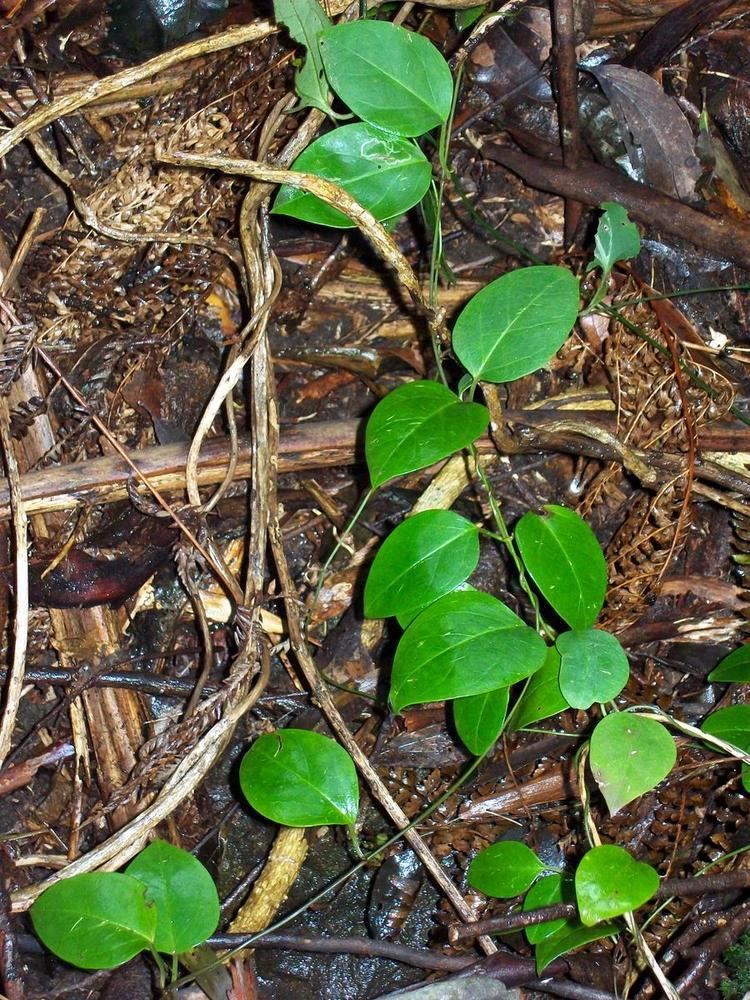Kingdom Plantae Family Apocynaceae Genus Tylophora Rank Species | Order Gentianales Subfamily Asclepiadoideae Scientific name Tylophora barbata | |
 | ||
Similar Notelaea venosa, Notelaea longifolia, Poa affinis, Leucopogon juniperinus, Entolasia stricta | ||
Tylophora barbata, the Bearded Tylophora is a small vine in the dogbane family. A common plant found south of Bulahdelah, New South Wales. The habitat is rainforest and moist eucalyptus forests in south eastern Australia. Not often seen in flower, but flowers are dark red, around 7 mm long on thin stalks. Broken branches produce watery or milky sap.
Contents
Taxonomy
In 1810, this species first appeared in scientific literature, in the Prodromus Florae Novae Hollandiae, authored by the prolific Scottish botanist, Robert Brown, who gave it its current binomial name. The generic name is derived from the Ancient Greek tylos/τυλος "knot", and phoros/φορος "bearing", from the swollen staminal coronal lobes. Barbata means "bearded" from Latin, presumably referring to the bearded seeds.
Description
A twining or climbing vine, Tylophora barbata can reach 2–3 m in length, often climbing trees or twining around its own branches. The stems and leaves are smooth and exude a clear sap when broken. The light green oval to spear-shaped leaves sit on 1–2 cm long petioles and measure 2.5–6 cm long by 2–4 cm wide. Flowering occurs from November to May, the small flowers are shades of maroon, purple or brown and measure 0.5–0.8 cm in diameter. It fruits two to three months after flowering.
Distribution and habitat
Tylophora barbata is found from Bulahdelah, New South Wales southwards into northeastern Victoria. The only member of the genus in the Sydney basin, it is found in the Royal National Park and around Mount Tomah in the Blue Mountains. Its habitat is rainforest and wet sclerophyll forest, where it prefers wet areas such as gullies.
Cultivation
Readily adapting to cultivation, Tylophora barbata prefers a well-drained soil and is propagated from seed or cutting. It is useful as a groundcover.
